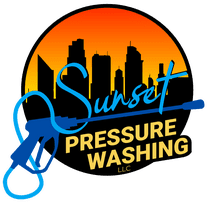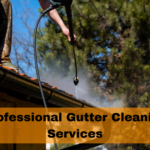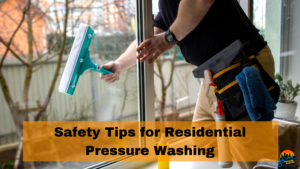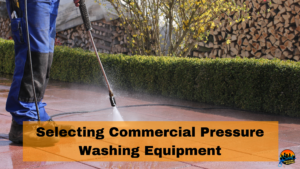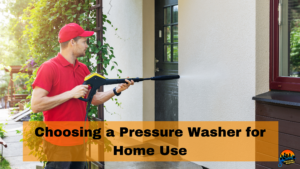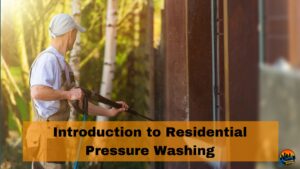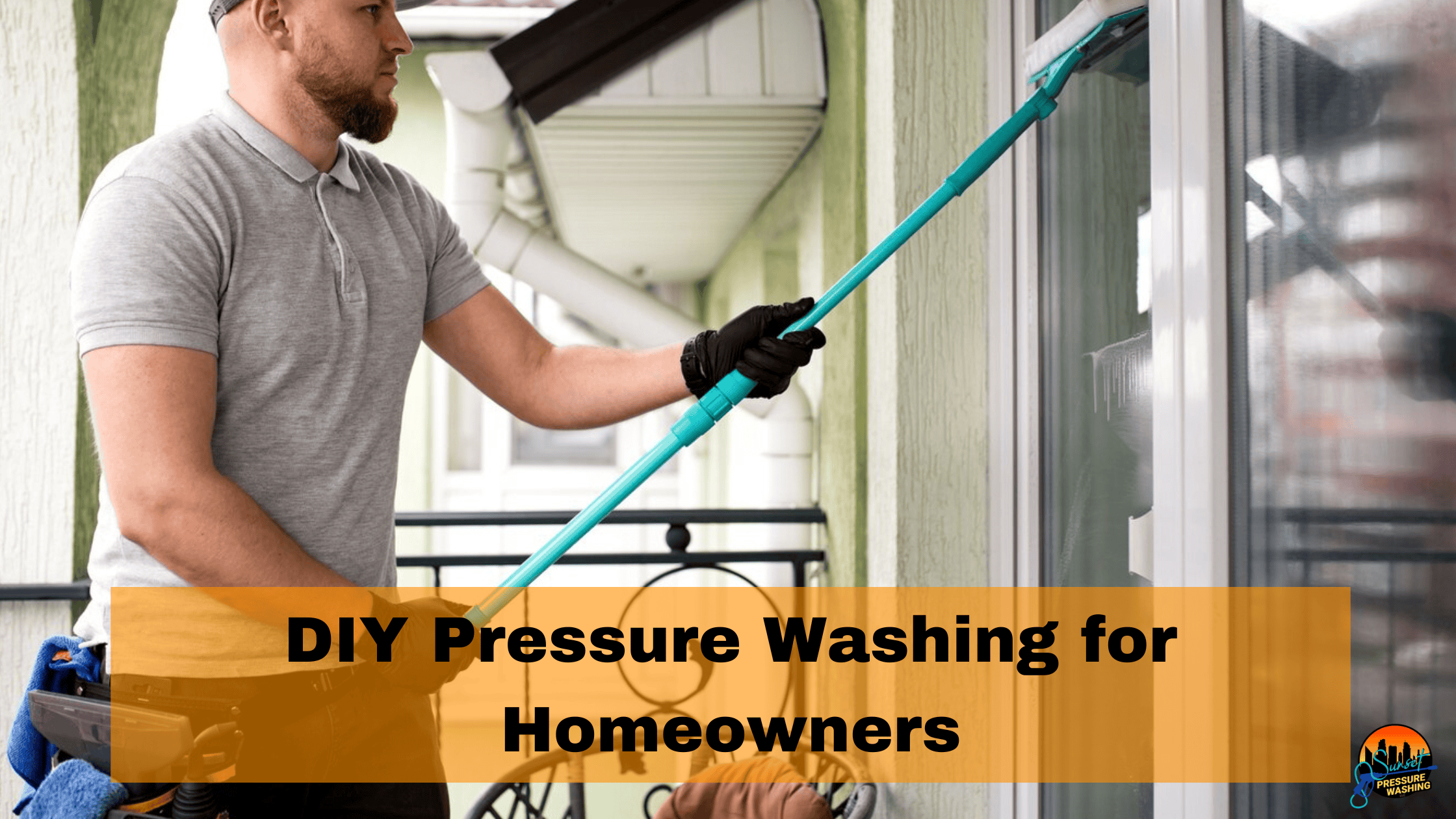
DIY Pressure Washing for Homeowners
Pressure washing your home can rejuvenate your property’s appearance, increase its value, and even prevent costly repairs by removing harmful contaminants. This guide covers everything homeowners need to know about DIY pressure washing, from selecting the right equipment to step-by-step instructions on cleaning different surfaces. Additionally, we’ll introduce you to a trusted resource for those who prefer professional help.
Understanding Pressure Washing
Pressure washing, also known as power washing, involves the use of high-pressure water spray to remove dirt, mold, algae, and other pollutants from various outdoor surfaces. This technique can transform the exterior of your home, making it look fresh and new again. Here’s what you need to know about pressure washing:
What is Pressure Washing?
Pressure washing utilizes a mechanical sprayer that emits water at high pressures. The force generated by these sprayers is significantly stronger than a typical garden hose. Pressure washers are categorized by the strength of their spray, which is measured in pounds per square inch (PSI). These tools can be powered by electricity or gas, with varying levels of power suited to different types of cleaning tasks.
Types of Pressure Washers
- Electric Pressure Washers: Ideal for light jobs like cleaning patio furniture, small decks, and vehicles. They are quieter, lighter, and generally easier to handle.
- Gas Pressure Washers: These are more powerful and better suited for larger jobs, such as cleaning driveways, siding, and stripping paint. They are more mobile as they don’t require a power outlet but are louder and emit exhaust fumes.
Common Uses of Pressure Washing
Pressure washing can be used on a variety of surfaces to remove a wide range of materials:
- Home Exteriors: Suitable for vinyl, brick, and wood siding to remove mildew, stains, and mold.
- Driveways and Walkways: Clears away dirt, debris, and stains from asphalt, concrete, and other durable materials.
- Decks and Patios: Cleans and prepares these surfaces for painting or sealing.
- Fencing: Removes built-up grime and weather-related residue.
- Outdoor Furniture: Effectively cleans plastic, wood, and metal furniture without the need for scrubbing.
Benefits of Pressure Washing
- Enhanced Curb Appeal: Regular cleaning maintains the appearance of your home, making it look well cared for.
- Increases Property Value: A clean exterior can boost your home’s market value, which is particularly beneficial if you’re considering selling your property.
- Preventative Maintenance: Regular pressure washing can prevent the buildup of harmful substances that can cause long-term damage to surfaces.
- Health Benefits: Removing mold, algae, and other allergens from your home’s exterior contributes to a healthier living environment.
Equipment Needed for DIY Pressure Washing
To tackle pressure washing projects effectively, having the right equipment is crucial. This ensures not only the efficiency of your cleaning tasks but also the safety of the operator. Here’s a breakdown of the essential gear you’ll need to embark on DIY pressure washing ventures.
Choosing the Right Pressure Washer
The choice of pressure washer will largely depend on the nature of the tasks you plan to tackle:
- Electric Pressure Washers: Suitable for lighter, residential jobs such as cleaning outdoor furniture, small decks, and vehicles. These units are quieter, lighter, and generally more user-friendly.
- Gas Pressure Washers: Offering more power, these are ideal for larger and more demanding jobs like cleaning large driveways, siding, and preparing surfaces for painting. They are more mobile as they do not require being plugged into an electric outlet.
Pressure Washer Nozzles
Nozzles dictate the angle and intensity of the water spray, which can be adjusted to suit different cleaning needs:
- 0-degree nozzle (red): Delivers a pinpoint spray for tough grime and stains on concrete.
- 15-degree nozzle (yellow): Ideal for stripping paint and cleaning hard surfaces.
- 25-degree nozzle (green): Best for general cleaning on decks, patios, and boats.
- 40-degree nozzle (white): Suitable for delicate surfaces like windows and gardens.
- Soap nozzle (black): Used for applying detergents and cleaning solutions.
Hoses and Connectors
- High-pressure hose: This hose connects to the pressure washer and should be durable enough to withstand high pressures.
- Garden hose: Needed to supply water to the pressure washer.
- Connectors and adapters: Ensure you have the right fittings to connect your hoses and nozzles securely to avoid leaks.
Detergents and Cleaning Solutions
Some cleaning tasks may require specific detergents designed for pressure washers:
- Concrete cleaners: Designed to tackle oil, grease, and grime on driveways and garage floors.
- Deck and fence cleaners: Formulated to remove mildew, mold, and weather stains.
- Vehicle wash detergents: Safe for use on cars, boats, and motorcycles, helping to loosen dirt without damaging paint.
Safety Gear
Safety cannot be overstated when operating a high-powered machine like a pressure washer:
- Safety goggles: Protects eyes from harmful debris and chemicals.
- Ear protection: Especially necessary with louder, gas-powered models.
- Waterproof gloves: Enhances grip and protects hands from chemicals and high-pressure water.
- Closed-toe shoes: Protects feet from accidents and keeps them dry.
Additional Accessories
- Surface cleaner attachment: A wide, circular attachment that cleans large flat areas evenly.
- Extension wands: Helpful for reaching high places such as second-story walls without the use of a ladder.
- Rotary brushes: Useful for scrubbing stubborn dirt on patios and driveways.
Safety First
Operating a pressure washer involves significant force and water pressure, making safety a paramount concern. Mishandling can lead to personal injury or damage to your property. Here are critical safety guidelines to follow when using a pressure washer:
Handling Equipment Safely
- Read the Manual: Before starting, familiarize yourself with the equipment by reading the owner’s manual. This will help you understand the specifics of your model, including operation and emergency shut-off procedures.
- Inspect the Equipment: Before each use, check the pressure washer for any signs of wear or damage. Ensure all connections are secure to prevent leaks, which can cause slips and falls.
- Use Proper Settings and Attachments: Always use the correct nozzles and settings for the job at hand to avoid damaging surfaces or creating hazardous flying debris.
- Never Point the Nozzle at People or Animals: The water stream can cause severe injuries, so never direct it towards people or pets, even momentarily.
Personal Safety Equipment
- Wear Protective Gear: Always wear goggles or safety glasses, sturdy footwear, and hearing protection, especially when using gas-powered models. Waterproof gloves can also provide better grip and protection from chemicals.
- Avoid Electric Hazards: If you are using an electric pressure washer, plug it into a ground-fault circuit interrupter (GFCI) to protect against electrical shocks. Keep all electrical connections dry and off the ground.
Safe Operating Practices
- Maintain Firm Footing and Balance: Always stand on a stable surface to avoid falls, particularly when using high-pressure settings or when reaching high places.
- Be Aware of Kickback: High-pressure water can cause the spray gun to kick back when initially triggered. Be prepared to handle this safely by holding the gun with both hands.
- Keep Bystanders Away: Make sure that other people, especially children, are at a safe distance from the area being cleaned.
Environmental Considerations
- Manage Water Runoff: Be aware of where the water runoff is going, particularly if you are using chemicals. Some cleaning chemicals may harm plants or contaminate water sources.
- Use Eco-friendly Cleaners: Where possible, use environmentally friendly cleaners that won’t harm your garden or local waterways. Many brands offer biodegradable and non-toxic options.
- Be Mindful of Noise: Gas-powered pressure washers can be quite loud. Consider your neighbors and try to use the washer during reasonable hours.
Preparing Your Home for Pressure Washing
Before you begin pressure washing your home, it’s essential to properly prepare the area and the surfaces you intend to clean. This preparation not only ensures safety but also enhances the effectiveness of your cleaning efforts. Here’s how to get your home ready for a thorough pressure washing:
Inspect and Secure the Area
- Survey Your Home: Walk around your property and inspect the surfaces you plan to wash. Look for any signs of damage, such as cracked siding, loose bricks, or missing mortar. Repair these issues before washing to prevent water from exacerbating the problems.
- Close Windows and Doors: Ensure all windows and doors are tightly closed to prevent water from entering your home.
- Cover Vents and Electrical Outlets: Use plastic sheeting and duct tape to cover external vents, electrical outlets, and light fixtures to protect them from water ingress.
- Remove Obstacles: Clear the area of furniture, potted plants, and any other movable objects. For items that cannot be moved, cover them with waterproof tarps.
Protect Landscaping and Delicate Surfaces
- Water Plants and Lawn: Thoroughly water your garden and lawn before pressure washing. This will help dilute any chemicals that might reach the plants during cleaning.
- Cover Plants: Use tarps or breathable fabric to cover plants and shrubs close to the cleaning area to protect them from the pressure and any cleaning chemicals.
- Secure Loose Items: Ensure that small decorations, exterior lights, and other loose items are secured or removed if they might be damaged by the spray.
Plan Your Cleaning Process
- Choose the Right Time: Plan your pressure washing on a dry day with little to no wind to minimize the impact of water spray and chemical drift.
- Select Appropriate Cleaners: Choose cleaning solutions that are suitable for the surfaces you are cleaning and safe for the surrounding environment. Test the cleaner on a small, inconspicuous area to ensure it does not damage the surface.
Prepare Safety Equipment
Gather Personal Protective Equipment (PPE): Prepare safety goggles, gloves, ear protection (for gas-powered models), and non-slip boots to protect yourself from debris and high-pressure water.
Check Water Supply
Ensure Adequate Water Supply: Make sure your water source can provide enough flow to match your pressure washer’s requirements. Check hoses and connections for leaks and ensure that your garden hose is securely attached to the pressure washer.
Step-by-Step Guide to Pressure Washing
Pressure washing your home can be a satisfying DIY project that enhances curb appeal and maintains the longevity of your property’s surfaces. Here’s a detailed step-by-step guide to help you efficiently and safely pressure wash various parts of your home:
1. Setup Your Equipment
- Assemble Your Pressure Washer: Follow the manufacturer’s instructions to set up your pressure washer. Make sure all connections are secure to avoid leaks.
- Connect Water Supply: Attach your garden hose to the pressure washer and ensure the connection is tight. Turn on the water supply to check for any leaks.
- Choose the Correct Nozzle: Select the appropriate nozzle based on the surface you are cleaning and the type of cleaning needed. Generally, a wider angle nozzle (25-degree or 40-degree) is safer for most home exteriors.
2. Apply Detergent (Optional)
- Prepare Cleaning Solution: If your surface is very dirty or has mildew, applying a detergent can help loosen grime. Use a detergent recommended for pressure washers and safe for the surface you’re cleaning.
- Use Low Pressure: Switch to a lower pressure setting or use a soap nozzle to apply the detergent. Start from the bottom and work your way up to avoid streaking.
3. Let the Detergent Sit
Dwell Time: Allow the cleaning solution to sit on the surface for 5-10 minutes. Be careful not to let the solution dry out, as this can leave residues.
4. Start Pressure Washing
- Test the Pressure: Before starting on the actual surface, test the pressure washer on a small, inconspicuous area to ensure the setting does not damage the surface.
- Wash from Top to Bottom: For vertical surfaces like siding, start from the top and work your way down to ensure that dirt and detergent flow downwards.
- Maintain Proper Distance: Keep the nozzle about 12 to 16 inches away from the surface. Adjust the distance based on the pressure needed and the sensitivity of the material.
5. Use Overlapping Strokes
- Even Cleaning: Use smooth, overlapping strokes to clean the surface. This technique helps prevent streaks and ensures an even clean.
- Keep the Nozzle Moving: Always keep the nozzle moving to avoid focusing the high-pressure water in one spot too long, which can damage the surface.
6. Rinse the Surface
Remove Detergent: After thoroughly cleaning the area, switch to a higher pressure setting if necessary and rinse the surface of all detergent and loosened dirt. Start from the top and work your way down.
7. Clean Up
- Turn Off Equipment: Turn off the pressure washer and disconnect it from the hose. Release any remaining pressure by squeezing the trigger.
- Clean Your Equipment: Flush out the detergent from the pressure washer if used. Clean the nozzles and inspect the equipment for any damage or wear.
8. Inspect and Touch Up
- Inspect the Area: Once the surface is dry, inspect for any missed spots or areas that might need a gentle touch-up.
- Perform Necessary Repairs: If you notice any damage or areas needing more attention, plan to repair or clean those specifically.
Tips and Tricks for Effective Cleaning
Pressure washing can significantly improve the appearance of your home’s exterior, but knowing a few key tips and tricks can make the process smoother and more effective. Here are some helpful hints to enhance your DIY pressure washing projects:
Choose the Right Time for Washing
- Consider the Weather: Opt for a mild, overcast day to do your pressure washing. Bright sunlight can cause rapid drying, leading to uneven cleaning and visible streaks.
- Avoid Windy Days: Wind can spray back detergent and water, making it difficult to control the cleaning process.
Pre-Treat Stains
Tackle Tough Stains First: For areas with oil stains, rust, or mildew, pre-treat with a specialized cleaner before pressure washing. This will help break down the stain and make it easier to remove.
Use the Right Technique
- Distance and Angle: Keep the spray nozzle at least 12 inches away from the surface and adjust as needed. Spraying too closely can damage the surface. Hold the nozzle at a 45-degree angle for effective lifting of dirt and grime.
- Overlapping Strokes: When washing large surfaces like driveways or siding, use overlapping strokes to ensure you don’t miss any spots. This technique also helps prevent streaks.
Adjust Pressure Accordingly
Vary Pressure Based on the Surface: Use lower pressure settings for softer or more delicate surfaces like wood decks or painted items to avoid damage. Higher pressure can be used on concrete and other hard surfaces.
Keep the Equipment Clean
Regular Maintenance: Regularly clean your pressure washer’s filters and check the nozzles for clogs. A well-maintained machine performs better and lasts longer.
Eco-Friendly Cleaning
Use Biodegradable Soaps: Choose environmentally friendly cleaning solutions that won’t harm your plants or pollute your property. These cleaners are effective and offer peace of mind regarding environmental impact.
Efficient Cleaning Patterns
Plan Your Path: Before starting, plan your cleaning route, especially for large areas. Begin at one end and systematically move to the other to avoid dirty water running over cleaned areas.
Safety First
- Never Rush: Take your time to set up and execute your cleaning tasks. Rushing can lead to mistakes and potential injuries.
- Secure Ladders and Scaffolding: If you must use a ladder or scaffolding, make sure they are stable and secure before starting to clean higher areas.
Final Checks and Touch-Ups
- Inspect as You Go: Regularly stop and inspect the area you just cleaned. Touch up any missed spots while the equipment is still running.
- Dry and Evaluate: Some imperfections may not be visible until the surface is dry. Inspect your work after it has dried and touch up if necessary.
Maintaining Your Pressure Washer
Proper maintenance of your pressure washer is essential for ensuring its longevity and optimal performance. Regular care prevents breakdowns and ensures the machine is safe and ready to use whenever you need it. Here are essential maintenance tips to help keep your pressure washer in top condition:
Regular Maintenance Checks
- Check the Oil Level: For gas-powered pressure washers, check the engine oil level before each use. Change the oil according to the manufacturer’s guidelines, usually after every 50 hours of use or at least once a season.
- Inspect the Air Filter: Clean or replace the air filter regularly to prevent the engine from running rough or overheating. This is particularly important in dusty environments.
- Examine the Spark Plug: Inspect the spark plug for signs of wear or carbon build-up and replace it if necessary to ensure easy starting and efficient engine operation.
Hose and Nozzle Care
- Inspect Hoses Regularly: Check for cracks, leaks, or any sign of wear in the high-pressure hose. A damaged hose can burst under pressure, presenting a serious safety hazard.
- Clean the Nozzles: Clogged nozzles can decrease the efficiency of your pressure washer. Use a small needle to clear out any debris. Always ensure the machine is off and disconnected from the water supply when performing this task.
Pump and Water System Maintenance
- Pump Oil: Check the pump oil level and look for any signs of contamination by water or debris. Change the pump oil as recommended by your pressure washer’s manual.
- Flush Out Detergent: After using any cleaning solutions, flush the system with clean water to prevent the build-up of chemical residues that can corrode your equipment.
- Winterize the Pump: If you live in a freezing climate, it’s crucial to winterize the pump. Use antifreeze in the pump to prevent any remaining water from freezing and cracking the pump housing.
Storage Solutions
- Store Properly: Always store your pressure washer in a clean, dry place away from the elements. Ensure it is placed where it won’t be knocked over or buried under heavy items.
- Keep It Covered: Use a cover to keep dust and debris from accumulating on the washer, especially if stored in a shed or garage where it may be exposed to dirt.
Regular Use and Testing
- Operate Regularly: Regular use can help prevent the internals from seizing up. If you don’t use your washer frequently, it’s a good idea to run it briefly every month to keep the components moving and check for any issues.
- Test Safety Features: Regularly test any safety switches or automatic shut-offs to ensure they are functional, as these features are crucial for safe operation.
When to Hire a Professional
While DIY pressure washing can be effective for routine home maintenance, there are situations where hiring a professional is advisable. Knowing when to call in the experts can save you time, ensure the job is done correctly, and prevent potential damage to your property. Here are key scenarios where you should consider professional pressure washing services:
Handling Large or Complex Projects
- Size and Scope: If the area you need to clean is extensive or includes multiple types of surfaces, a professional team can manage the project more efficiently with commercial-grade equipment.
- Complex Surfaces: Surfaces like natural stone, brick, stucco, or older wood may require specialized cleaning techniques to avoid damage. Professionals have the experience and equipment to handle these materials safely.
Safety Concerns
- High Areas: Cleaning high places such as second-story walls, gutters, and roofs poses significant fall risks. Professionals are equipped with the necessary safety gear and insurance to handle these jobs safely.
- Hazardous Materials: The presence of lead paint, mold, or other hazardous materials requires expert handling to ensure safety and compliance with environmental regulations.
Lack of Proper Equipment
- Advanced Technology: Professional pressure washers often have access to high-end equipment and cleaning solutions that are not feasible for typical homeowners to purchase or rent.
- Efficiency: Professional-grade machines can achieve deeper cleans in a shorter amount of time, which can be crucial if you’re preparing for an event or selling your home.
Ensuring Quality Results
- Guaranteed Work: Many professional cleaning services offer guarantees on their work, ensuring satisfaction and resolving any issues without extra costs.
- Expertise: Professionals have the training and experience to choose the right techniques and products for different types of dirt and staining, which means better results without the risk of damage.
Time Constraints
Busy Schedules: If your schedule doesn’t allow the time needed to complete a thorough cleaning, hiring a service can be a convenient solution. Professionals can complete the job while you attend to other responsibilities.
Preventative Care
Regular Maintenance: For homeowners who want to maintain their property’s value without regularly investing time in exterior maintenance, scheduling regular professional cleanings can be an effective solution.
Environmental Regulations
Local Restrictions: Some areas have strict regulations regarding water runoff and the use of chemicals. Professionals are knowledgeable about these rules and can ensure that your cleaning project complies with local environmental standards.
Discover Sunset Pressure Wash
If you’re looking for expert residential pressure washing services, look no further than Sunset Pressure Wash. Known for their professionalism and high-quality results, they offer eco-friendly cleaning solutions and advanced techniques for both residential and commercial properties. Whether it’s reviving your home’s facade or deep cleaning your driveway, their team is equipped to handle all your needs efficiently and safely.
Ready to transform the look of your property? Visit Sunset Pressure Wash to learn more about their services and schedule your cleaning. Embrace a cleaner, more inviting exterior today and let Sunset Pressure Wash help you maintain the beauty and value of your property with their top-notch residential pressure washing services.
